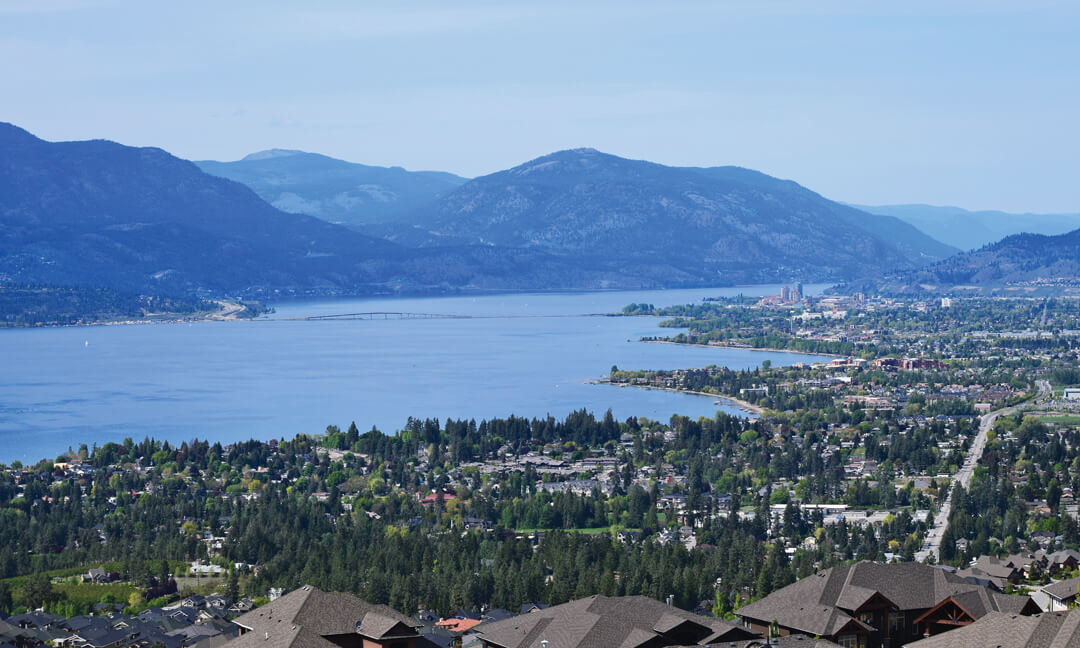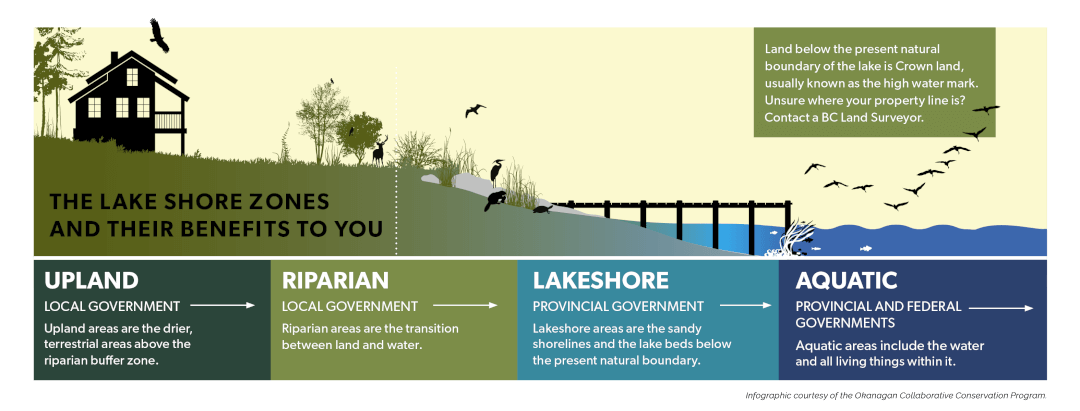As seen in
[downloads ids="154720" columns="1"]

Living along the shoreline of Okanagan Lake is exquisite. Keeping shores natural can enhance property value, protect water resources and preserve the beautiful vistas for everyone’s enjoyment and benefit.
Over the last quarter century, an increase in urban and rural development has caused significant changes to the lakefront landscape of the Okanagan. Across the region, work is being done to enhance shoreline protection. A new project, initiated by the Regional District of Central Okanagan in partnership with the Okanagan Collaborative Conservation Program and the South Okanagan Collaborative Conservation Program, offers a resource guide for residents living lakeside.
The release of the 2016 Okanagan Lake Foreshore Inventory and Mapping Update Report and the flooding events in 2017 and 2018 highlighted the need for resources to help landowners make informed decisions about how to keep natural lakeshore areas protected.
The guide supports flood preparedness and offers practical solutions on how property owners can protect natural areas and enhance the region’s resilience to climate change.
Okanagan Lake has 290 kilometres of shoreline and research from the 2016 foreshore mapping update shows that the majority is developed, with only 41 percent remaining natural. The native plants found along natural shorelines provide habitat for fish and other aquatic species and helps create a buffer area that allows lake waters to rise and fall with the changing seasons. When these sensitive areas are disturbed by development, they no longer provide these benefits.
A natural buffer of 30 to 50 metres is the minimum width recommended to protect waterways from pollution and sediment. A much wider buffer is needed to protect plants and wildlife from human disturbance.
Plants provide 19 to 120 times more protection against wind and wave action than large rock. Blanket flower, showy milkweed and dogwood shrubs are some of the native planting recommended in the guide.
Residents are asked to not add fill, sand, or gravel to the natural shoreline.
Any land disturbance in or around Okanagan Lake is subject to permitting and may include authorizations from multiple agencies before proceeding with any proposed development. Constructing buildings, roads, trails or docks require permits, but approval may also be needed for removing trees, altering plants or disturbing soils.
The area below the present natural boundary of the lake is Crown land and is available for casual public use. This area should not be blocked by retaining walls, fences or other development.
The resource guide and related information can be found at lakeshore-living.okcp.ca.





We need sewer instead of septic to protect the lake in our lake side communities, like Okanagan Centre